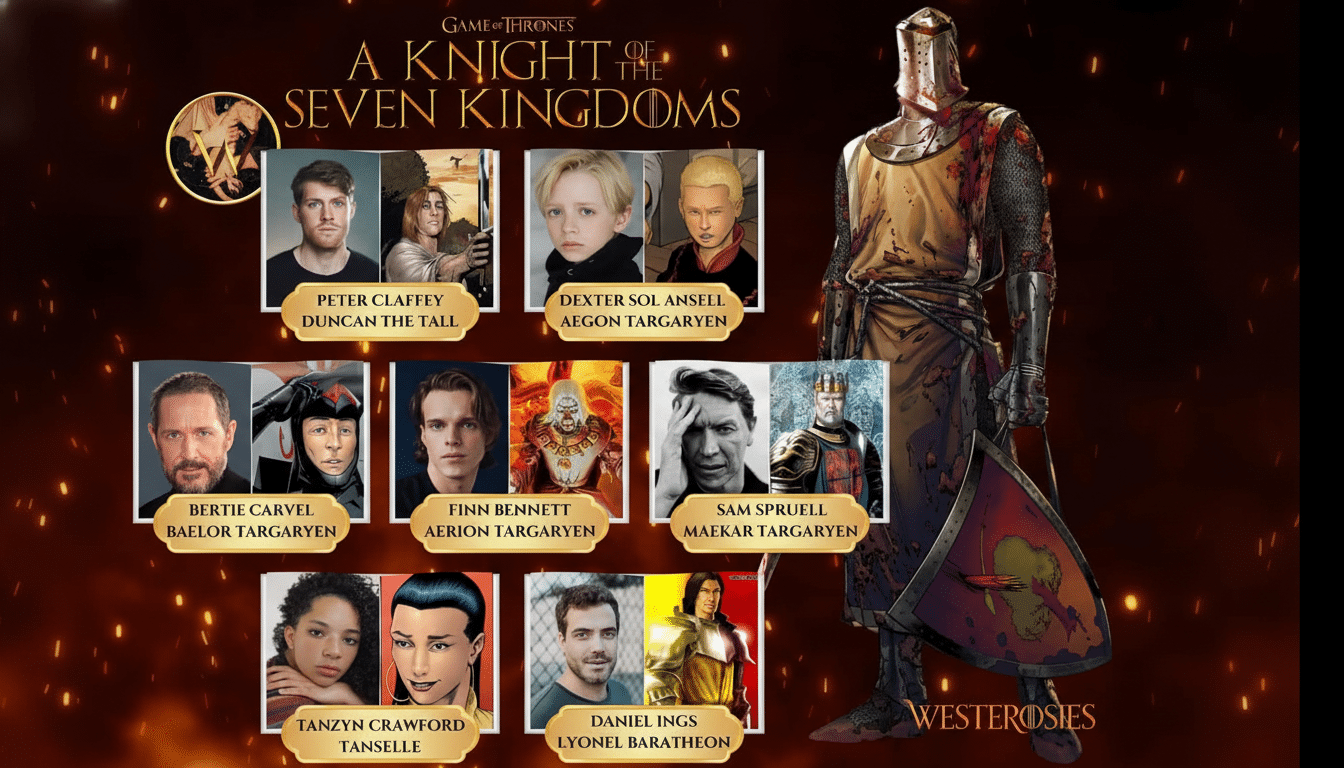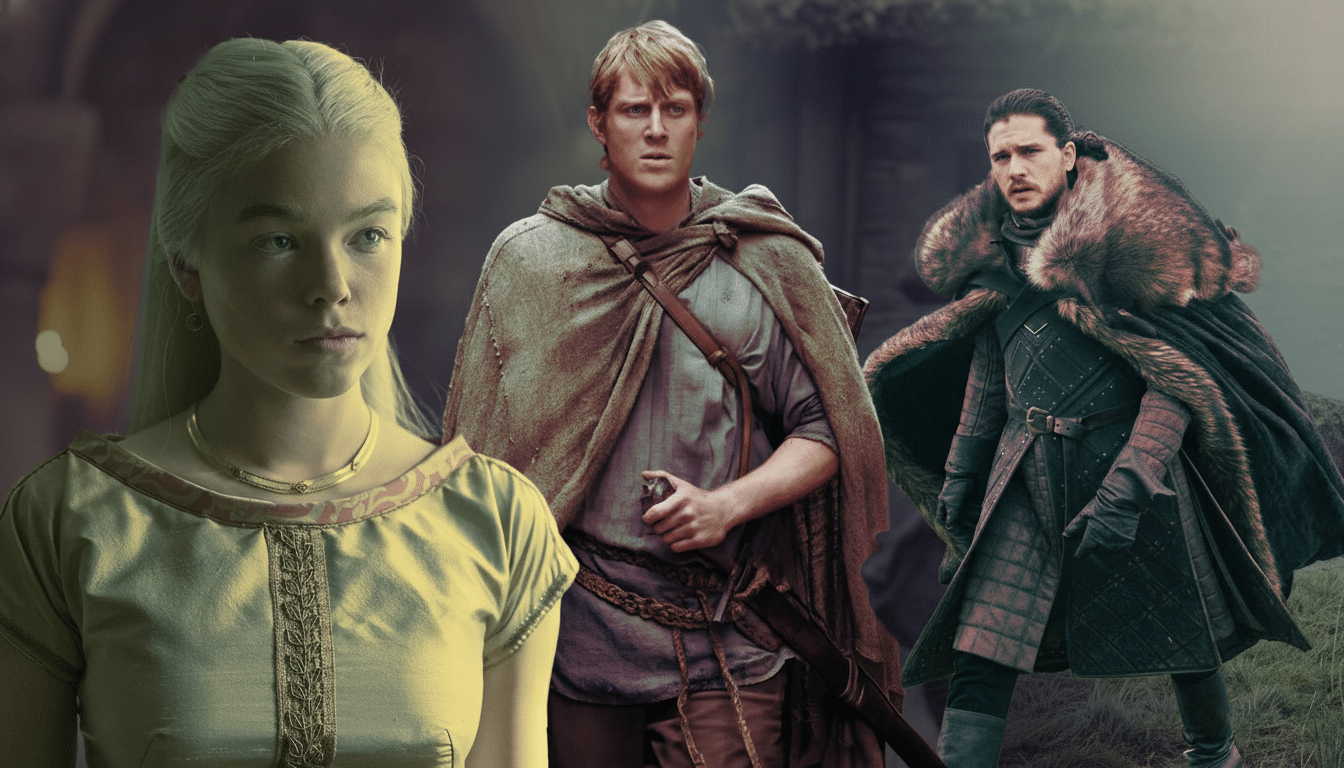HBO’s A Knight of the Seven Kingdoms took center stage at New York Comic Con, with author George R.R. Martin, showrunner Ira Parker and stars Peter Claffey and Dexter Sol Ansell unspooling details about what makes this Westeros follow-up so special.
Accompanied by a first-look trailer, the panel sent five clear messages about tone, scale and how this prequel aims to surprise even diehard fans.
- 1. Jousting Is The Main Event And It Rides High
- 2. A Ground-Level POV Changes Westeros In Big Ways
- 3. Dunk And Egg’s Chemistry Is More Than Just Written
- 4. A Trial of Seven Promises the Season’s Big Shockwave
- 5. Egg’s Mysterious Connections Tie Story Back to Targaryen History
- What This Means for the Franchise Going Forward

Set about 100 years prior to the events of Game of Thrones and inspired by Martin’s novella The Hedge Knight, the series will follow hedge knight Ser Duncan the Tall (also known as Dunk) and his squire, Egg, as they travel to a tourney at Ashford Meadow. These are the lessons of the biggest magnitude from the stage.
1. Jousting Is The Main Event And It Rides High
Martin couldn’t be clearer: it was the goal of the show’s makers to produce the most visceral jousting that TV viewers have witnessed. That’s a high bar — film historians have tended to single out Ivanhoe from 1952 as the classic flowering of tournament spectacle — but the idea here is to exceed all that with contemporary stunt work, practical effects and in-camera action.
Parker also teased an evening tourney set piece. Count on torchlit lances, armored silhouettes and a visual lexicon that tilts more toward danger than pageantry. With HBO’s history of epic-scale combat, this could be the show’s signature pull.
2. A Ground-Level POV Changes Westeros In Big Ways
Unlike the palace halls and dynastic empire of Game of Thrones and House of the Dragon, this story is relayed through Dunk’s (non-titled, coin-short) eyes — a man with everything to prove.
Parker played a kind of “from-the-mud-up”: fewer councils and crowns, more scraped knuckles and hard choices based in the consistent-night chaos of one man figuring out the rules that would govern when he was gone.
This perspective shift matters. It reimagines familiar institutions — tournaments, oaths, trials — not as distant ceremonies of the highborn but as life-or-death ordeals for someone who can’t afford a single wrong turn. But for a franchise that has drawn tens of millions per episode with recent installments, according to HBO and Warner Bros. Discovery, that new perspective could draw in viewers beyond the hardcore court-intrigue devotee.
3. Dunk And Egg’s Chemistry Is More Than Just Written
Dunk and Egg’s fighting-odd-couple friendship is the core of the novellas: a huge, guileless knight paired with a needle-sharp squire. Claffey and Ansell are great onstage foils for one another, with the kind of fast-paced, teasing chemistry you’d hope for in a stage duo — including an argument about who rules in their off-set Mario Kart races. The anecdote is low-key on the surface, but it suggests something key: a lived-in chemistry that makes their Westerosi road story sing.

Claffey painted Dunk as a man struggling to reconcile the scrappy survivor he used to be with the ideals that now, thanks to his oath, he was sworn to uphold. That arc requires a foil to irk him and provoke him; Ansell’s Egg seems tailor-made for precisely that relationship.
4. A Trial of Seven Promises the Season’s Big Shockwave
Martin cited a big action chapter that turns on a Trial of Seven — the Tolkien-esque form of trial by combat, in which seven champions fight seven others. Readers of The Hedge Knight will recognize the premise and its moral hook; newbies can take this as Westeros turning the volume up on trial by combat.
Staging of that many fighters with coherent geography and character focus is notoriously difficult on screen. If the jousts are a technical exhibition, then the trial is what might be the narrative gut punch that shapes this season. And it fits into the show’s theme of justice as felt by those who lack power.
5. Egg’s Mysterious Connections Tie Story Back to Targaryen History
And the panel coyly nodded at what readers of the book series already know: that Egg is no ordinary squire. He’s Aegon Targaryen, later to be known in history as Aegon the Unlikely, here incognito. Nearly every interaction in the story, from how he sees knights and vows to what he learns at Dunk’s elbow, is reframed by that revelation.
The Targaryen thing is important for franchise consistency. Though this series is set long past the dragons’ extinction and eons before the events outlined in Game of Thrones, it subtly plants the seeds for the choices and values that have come to define the realm. It’s lore building at the character level, not a trivia dump — a method that tends to age well in long-running sagas.
What This Means for the Franchise Going Forward
While HBO’s fantasy has grown up well before — House of the Dragon’s first season averaged about 29 million viewers per episode across platforms, according to the network — A Knight of the Seven Kingdoms isn’t attempting to follow that playbook. It’s a pared-down, grittier series; one that centers on two wayfarers whose decisions weigh heavier than their lineages. The panel at NYCC imagineered a lean universe for the show.
If the production sticks its landings on jousts, nails the Trial of Seven and lets Dunk and Egg’s friendship propel the action, this could be the most human — and quietly radical — Westeros story yet.

